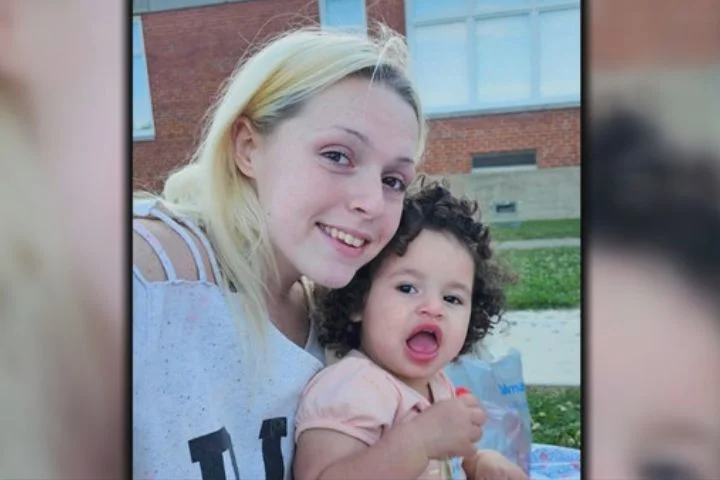Eric Pyles got off his school bus at 2:30 pm on Tuesday, December 12, 2000, just like he did every school day. Normally the 12-year-old would head straight to his Union Township, Pennsylvania home, but on this particular day several of his classmates saw him walk off in the opposite direction. He cut through the backyard of a home on Silvertown Road and faded from view. He would never make it back to his house.
Eric and his younger brother, Thomas, had only recently moved to Pennsylvania. They had been living in Luray, Virginia with their parents, but their older sister, Maria, had been granted custody of them after their parents were accused of neglecting and abusing them. Maria moved them into the Awol Road home she shared with her husband and three children. It hadn’t been an easy transition.
Like many children who come from abusive backgrounds, both Thomas and Eric had some behavioral issues. They weren’t used to living in such a structured environment, and they didn’t appreciate having to follow the rules that Maria imposed on them. Their parents had never made them do chores or obey a curfew, and Eric made it clear that he didn’t like the fact that Maria expected him to listen to her.
Although the two boys could be a handful, Maria knew that it wasn’t their fault. She started taking them to counseling sessions; on two occasions, Eric was admitted to Philhaven Behavioral Healthcare Services so he could receive treatment on an in-patient basis. Despite therapy, Eric continued to act out in rebellion whenever he was told to do something he didn’t like. He would often tell Maria that he was going to run away; in reality, he would simply go off and hide in the woods for an hour or so until he calmed down.
Maria knew that something was wrong when Eric didn’t come home from school that Tuesday. By 4:00 pm, she was worried enough that she decided to call the Pennsylvania State Police and report her brother missing.
Although Eric had a history of running away, he never went far from home and he always returned a short time later. Maria noted that he had been in a good mood when he left for school that morning; unless he had been upset by something that happened at school, he should have come straight home.
The Pennsylvania State Police, along with volunteer firefighters and residents of the area, immediately launched a search for Eric. It was a cold day, with temperatures predicted to fall well below freezing after the sun went down. They knew it was imperative to find the 12-year-old quickly; hypothermia was a definite concern.
Eric’s bus stop was located at the corner of Awol and Silvertown Roads; officials decided to start the search there. A state police helicopter was dispatched to fly over the area, but didn’t see any sign of the missing boy. A bloodhound was able to pick up Eric’s scent and tracked it past the Jonesboro Bible Church and into a wooded area, but then lost it. Searchers combed through the woods for hours, but found nothing to indicate where Eric might have gone.
By the next morning, police were no closer to finding Eric. Detectives began conducting interviews with family members, friends, and neighbors, hoping someone would be able to point them in the right direction. Students who had gotten off the bus at the same stop as Eric reported seeing him walking away from his home; this was the same path the bloodhound had appeared to pick up.
A secretary at the Jonestown Bible Church told investigators that she had seen a small boy with a Washington Redskins backpack around 2:45 pm; he had entered the building and used the restroom before continuing into the wooded area nearby. Classmates confirmed that Eric had been carrying his Redskins backpack when he got off the school bus, so detectives were certain that Eric was the boy seen at the church.
Eric’s trail appeared to end after he left the church and entered the woods. Investigators were unable to find anyone who had seen Eric after 2:45 pm that Tuesday. They searched the area surrounding the church and Eric’s home several more times, but were unable to determine where Eric might have gone.
Maria recalled that Eric had often spoken of running away to Virginia, but she hadn’t believed he would actually do it. Detectives traveled to the Shenandoah Valley, where Eric’s parents and other relatives lived, but found nothing to indicate that Eric was there.
Eric had mentioned that he had tried to hitch a ride with a stranger before, but no one ever stopped to pick him up. Investigators worried that he might have attempted to hitch a ride to Virginia without realizing how dangerous it was.
As Eric’s guardian, Maria was considered a potential suspect in the earliest days of the investigation. Detectives knew that Eric had behavioral problems; they wondered if Maria might have struck out at him in anger during one of his episodes. In order to clear herself, Maria voluntarily submitted to a polygraph examination about her brother’s disappearance; she passed without problems, and investigators felt certain that she had no involvement.
Although he liked to put on a brave front, in reality Eric was just a little kid who would threaten to run away but always made sure he returned home before the sun went down. His family was certain that he wasn’t a runaway, but with no evidence of foul play, the case soon stalled and went cold. It would remain that way for a decade.
By 2010, Eric had been missing for ten years. Although Maria had never stopped hoping he would return home, she knew that the likelihood of a happy ending was slim. The local newspaper ran an article about the case on the 10th anniversary of Eric’s disappearance; police received a few tips after the article was published, but no new leads were developed.
Shortly after the article appeared, Maria was contacted by a man who claimed to have information about what had happened to her brother. He was willing to tell her what he knew, but only if she agreed to meet in person. Maria arranged to meet him at a local restaurant; she also called the police to tell them what she was doing.
An undercover officer was sent to pose as Maria’s husband; together, they went to the restaurant and waited for the man to arrive. Police had the area under surveillance, and noted that the man parked at a nearby convenience store rather than in the restaurant parking lot; this immediately made them suspicious about his intentions.
Once they were seated, the man claimed that he had found Eric’s Washington Redskins backpack and several other items. He seemed to know an awful lot about Maria and her family, which made her nervous. Police ended up bringing the man in for questioning; they determined that he had no real knowledge of the case. He had read the recent article about Eric’s case, and for some reason decided to make up a story about finding his backpack. It was nothing more than a cruel hoax.
Although Maria had suspected that the man had been lying to her, she still felt deflated when she learned of the hoax. She clung to the hope that Eric was still alive somewhere, and constantly wondered if she had done everything possible to locate him.
There have been no new leads in the case in years, but investigators still believe that they will solve the case. Although they have no evidence to prove it, they feel certain that Eric was the victim of a crime. In March 2020, a group of about 30 state troopers and cadets searched a wooded area along Awol Road near Interstate 78 in Union Township. Nothing was found during the search, but investigators indicated that they were reviewing Eric’s case file and hoped to be able to provide his family with some long-awaited answers about his fate.
Eric Pyles was 12 years old when he went missing in 2000. He has brown eyes and brown/blonde hair, and at the time of his disappearance he was 4 feet 8 inches tall and weighed 95 pounds. He was last seen wearing blue jeans, a gray sweatshirt with a picture of a deer on the front, black sneakers, and a blue flannel jacket. He was carrying a Washington Redskins backpack, which has never been found. If you have any information about Eric, please contact the Pennsylvania State Police at 717–865–2194.






